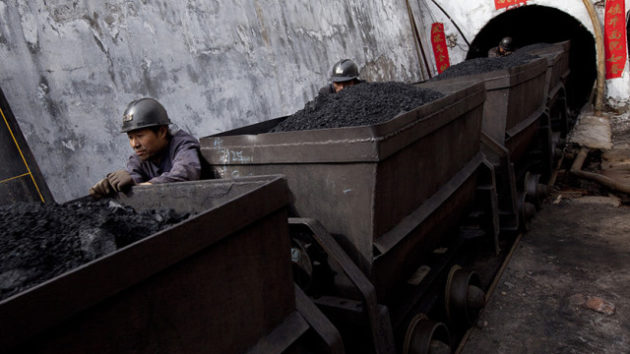Greenhouse Gas Deal with China is an Attack on the American Economy
Ignore the cheers from the White House, the State Department, Mother Jones, and elsewhere over the U.S.-China greenhouse gas agreement. It’s simply another attack on abundant American energy and the economy.
Secretary of State John Kerry detailed the deal in the New York Times: “For the first time China is announcing a peak year for its carbon emissions – around 2030 – along with a commitment to try to reach the peak earlier.” In exchange, the “United States intends to reduce net greenhouse gas emissions by 26 to 28 percent below 2005 levels by 2025.”
Here are a few points:
1. Reason’s Ronald Bailey estimates how much the United States will have to reduce its greenhouse gas emissions under the agreement:
In 2005, the U.S. emitted the equivalent of 7.26 gigatonnes of carbon dioxide. So cutting emissions by 28 percent by 2025 implies emissions of 5.23 gigatonnes in 2025, which is about the amount that the U.S. emitted in 1992. Assuming that Chinese emissions did peak in 2030, the country could by then be emitting three times more than the U.S.
2. China’s peak emissions year will be “around” 2030? Does that mean 2031, 2035, 2040? For international commitments to be meaningful and effective, they need to be precise. To put it mildly, “around” is not very precise.
3. This agreement is nonbinding and according to Reuters’ analysis is loaded with nebulous “intentions”:
The joint announcement employs language very carefully. Throughout, the operative word is “intend” or “intention”, which makes clear the statement is not meant to create any new obligations.
China’s 2030 emissions target is set in terms of a date but says nothing about the level at which emissions will peak.
4. Did China really agree to something that it expects will happen anyway? Ben White in Politico’s Morning Moneypoints to a 2012 story in The Guardian:
[B]arring any significant changes in policy, China’s emissions will rise until around 2030 – when the country’s urbanisation peaks, and its population growth slows – and then begins to fall.
5. Along those same lines, under the International Energy Agency’s baseline scenario (IEA-NPS) of greenhouse gas reductions, China’s emissions are projected to peak by 2030 anyway [see slide 17].
6. There’s plenty of international skepticism. A German newspaper commented on the deal, “[It’s] as if a grizzly bear and tiger discuss how the world can be more vegetarian.”
Add this all up and you have a one-sided agreement in China’s favor, as Karen Harbert, president of the U.S. Chamber’s Institute for 21st Century Energy said in a statement:
If actually implemented, this agreement would give an unfair advantage to Chinese manufacturers while forcing dramatic changes to America’s energy supply that will raise prices, threaten reliability, and increase the burden on hard working American families.
EDITORS NOTE: The featured image is of workers moving coal out from a mine in Shanxi Province, China. China is the largest producer and consumer of coal in the world. Photo credit: Nelson Ching/Bloomberg.


